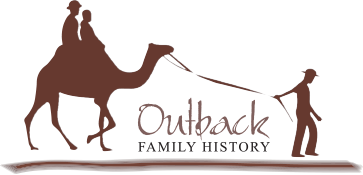- Aboriginal History
- Cemeteries
- Hospitals
- Hotels
- Maps of the Goldfields
- Military
- Miners
- Miscellaneous
- People
- Places on the Goldfields
- Place Index A-Z
This website is dedicated to the memory of my two dear friends Sandy Duncan and Shyama Peebles who both passed away in 2012.
Miscellaneous > The Camel
The Camel
Over 10,000 one humped camels (camelus-dromedarius) were imported into Australia between 1860 and 1907 from Pakistan & India. Only about 20 two humped camels (camelus-bactrianus) from the cold desert areas were imported but later perished.
Camels were first introduced as pack animals for carrying heavy loads and for pulling wagons, drays and scoops for dam sinking and for riding instead of horses. Mature Camels average weight is 750 kilograms and they can carry up to 450 kgs and pull loads of up to 900kg. Imported ‘Afghan’ camel handlers traveled 20-25 miles a day with strings of camels, each camel carrying an average load of 350kgs, supplying a vital lifeline to early pioneers of the dry interior of Australia. Most of the camels were released into the desert and pastoral regions in the mid 1920’s when motor vehicle use became the popular method of transport in Australia.
Today it is estimated there are more than 100,000 free-ranging herds of camels in the semi arid desert areas of Australia. Although not native to Australia the camel is very well suited to the country as having soft foot pads, they cause little erosion. Consuming 98% of the average bush means the camel doesn’t compete heavily with native fauna and its ability to survive with little water means the camel can roam large grazing areas. Today thousands of camels are shot by pastoralists or for pet meat. Some are captured for live sale to export or for tourist enterprises.
Recently it has become legal for Camel bi-products to be sold for human consumption in Australia. The meat is lean & red with very low fat content and is similar to beef in taste and texture. Camel milk is rich and lactose free which can be made into yogurts and cheeses. Camel hide is 4.5 times stronger than cattle hide and is an excellent industrial leather and is used for high quality leather accessories like boots, belts and bags. The hump fat can be rendered for soap and cosmetics or cooking fat. Camel hair is soft but strong and durable and can be spun to make yarn for coats & mats and can also be blended with sheep wool & mohair with good insulation properties.
PHYSICAL CHARACTERISTICS The gestation is 12 months, with only one calf weaned for up to 18 months. Cows mate from 2-3 years old, while bulls mate from 5-6 years old. Maturity is 12 years with a life expectancy of 30-40 years. Normal working life is from 5 - 20 years. Bulls “rut” in season in the cooler months and fight for leadership of the herd. They display themselves with a “doolau” or throat membrane and tar glands. The hump is a fat storage area which is converted to energy and indicates condition. The Camel chews cud and has four stomachs with a total intestine length of 60 metres.
It has the capacity to cope with very little water on an average of 5 to 10 days and can survive for several months in cooler weather without water. It will drink 5 to 20 litres of water per day when water is available. It can hold large quantities of water in its stomach and blood cells, it sweats very little due to 5-10 degree Fahrenheit blood temperature variation and also absorbs moisture by top feeding from vegetation. It also has small dry manure so there is very little body moisture loss.
In Australia the most common method to control a camel is by a nose peg. A mouth bit cannot be used due to the fact a camel chews his cud. The Camels intelligence is rated at the equivalent of an 8 -10 year old child and all have individual personalities. They can spit, bite and kick but well handled make excellent workers.
Previous Record Prospectors Meeting |
Return to Miscellaneous | Next Record Water |











